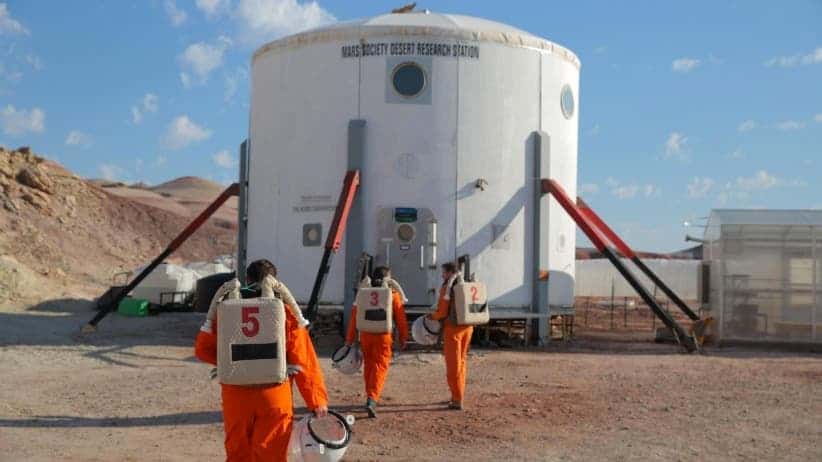Whether you love them or hate them, IKEA has forced us to rethink furniture, and it’s done it in style. Now, way before a manned mission to Mars is even being discussed, the Swedish company has its eyes on the Red Planet prize. Their engineers are working with NASA to help design the furniture of the future, fit for space travel and the rugged Martian environment.

The creative men and women who brought us the Billy Bookcase and the quintessential Lack coffee table will live for three days in a Mars simulation. The IKEA engineers will be taking a jab at space furniture will hang out at the Mars Desert Research Station in Utah, as part of a NASA partnership.
“It’s a crazy, fun experience. We’re basically completely isolated for three days to get a taste of what astronauts go through for three years,” IKEA Creative Leader Michael Nikolic said in a statement.
“What does comfort mean for compact living? How do we feel in small spaces? This year IKEA is digging a bit deeper,” the press release says, as if the next logical step after “Scandinavian apartment” is “tiny dome on a desolate alien world”.
NASA hasn’t really struck a deal with IKEA for furniture development, though the company is working with Lund University, and Lund itself is working with NASA. But what IKEA wants is to get a hands-on feel of the rigors of space travel, potentially helping design cozier and more efficient habitats.

Still, this isn’t all about space. IKEA feels that if they can design good furniture for Mars and outer space, then golly, they can also design good furniture for your crammed London apartment or your New York studio. In fact, they’ve already announced a new collection of furniture inspired by space. Though that’s only scheduled for 2019, space furniture… sign me up!
“I think that the essence of this collection will be about appreciating what we have on Earth: human beings, plants clean water and air,” Nikolic said. “But also diversity and a sense of belonging—things that we take for granted on a daily basis. After this journey, it’ll probably feel pretty awesome to come home to my own bed.”
You also have to consider the marketing effects of this project. I mean, we are covering this story, as are other outlets, and you’d have to be naive to think that IKEA doesn’t consider the publicity stunt that comes along. But I really don’t mind this, because in effect, what IKEA is doing is conserving the spirit of innovation: find a solution for an outworldly problem, then find ways to implement it back home.






